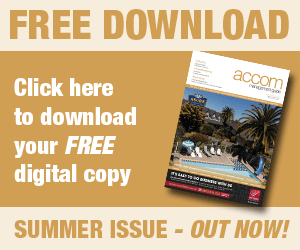Blessed with choice
- Details
- Published Date
The technology around internal accommodation complex communications has evolved considerably over the past decade.
As accommodation providers strive to streamline operational workflows and optimise the manner in which guest requests are addressed, the choice of the right internal communications platform is a key ingredient in today's hotels and resorts being able to deliver a quality service.
Traditionally, an internal paging system has been seen as an effective mechanism for accommodation staff to communicate with one another. The primary attraction to pagers as a solution is that they are relatively cheap, robust enough to cope with being dropped, and easily integrated. This last point, the ability to be integrated, becomes of particular significance to accommodation providers looking to operate "one touch" guest request and job-tracking solutions.
The perceived downside to traditional paging systems is that they offer only one-way communication – from paging server to the pager. In most cases, recipients of a page need to find a house phone to either return a call or close off a job. This, at times, can be a time- consuming process and in recent times, accommodation providers looking to achieve optimum efficiency in internal communications have trended towards platforms that enable a two-way flow of communication.
Some of the early solutions that met this two-way communication requirement were two-way radios and DECT phones. The former was an extremely popular solution among a number of high-end chains in the early 2000s, but as these same chains began implementing guest request management solutions, the inability of these two-way radios (of the day) to handle text-based communication made them virtually redundant.
Taking this market sentiment on board, two-way radio manufacturers began development around voice and text-enabled walkie-talkie devices, a technology known as terrestrial trunked radio (TETRA). Today, there are a wide range of TETRA alternatives and these are rapidly becoming the hospitality platform of choice.
Like TETRA, DECT is an extremely popular solution for hotels. It could be argued that even today, it remains the most prevalent internal communication platform in Australia's five-star market. Based on the digital enhanced cordless telecommunications technology, this solution enables increased mobility in staff communication – staff carry cordless phones that enable internal and external calls, along with internal (phone-to-phone) text messaging.
This instant phone-to-phone text messaging and integration to task-management software solutions, like FCS eConnect, make the DECT and TETRA platforms an attractive offering. Being able to close off jobs or respond to requests via a reply text message helps hotels cut down on unnecessary inter-departmental communication and frees up staff to deal with the accommodation provider's number-one priority, the guest.
One of the perceived disadvantages of the DECT and TETRA solutions is the cost of the associated infrastructure – base stations need to be installed at regular points throughout the hotel to ensure sufficient network coverage. For hotels that are already invested in telephony, data and video networks, this can become a costly exercise.
More recently, accommodation providers have been looking at methods that enable them to consolidate their communications infrastructure. A popular alternative for these properties are wi-fi handsets, available across a wide range of manufacturers – Cisco, Avaya, and Alcatel to name a few. These devices enable internal communication over the hotel's existing wireless network.
Like the TETRA and DECT devices mentioned above, they afford hotels the same two-way text functionality and in some cases, will represent a smaller infrastructure cost than competing solutions do. One caveat to consider, however, is the requirement for wireless coverage in both front and back of house – staff need to be able to receive messages wherever they are in the hotel. Just as wireless coverage will vary from hotel to hotel, so too will the cost of implementing a wi-fi communications solution.
In summary, it's fair to say that, although there isn't a "one size fits all" internal communications solution, today's hospitality market is blessed with choice. The trick for hotels is to find the solution that is most closely aligned with their budget and operating environment.


